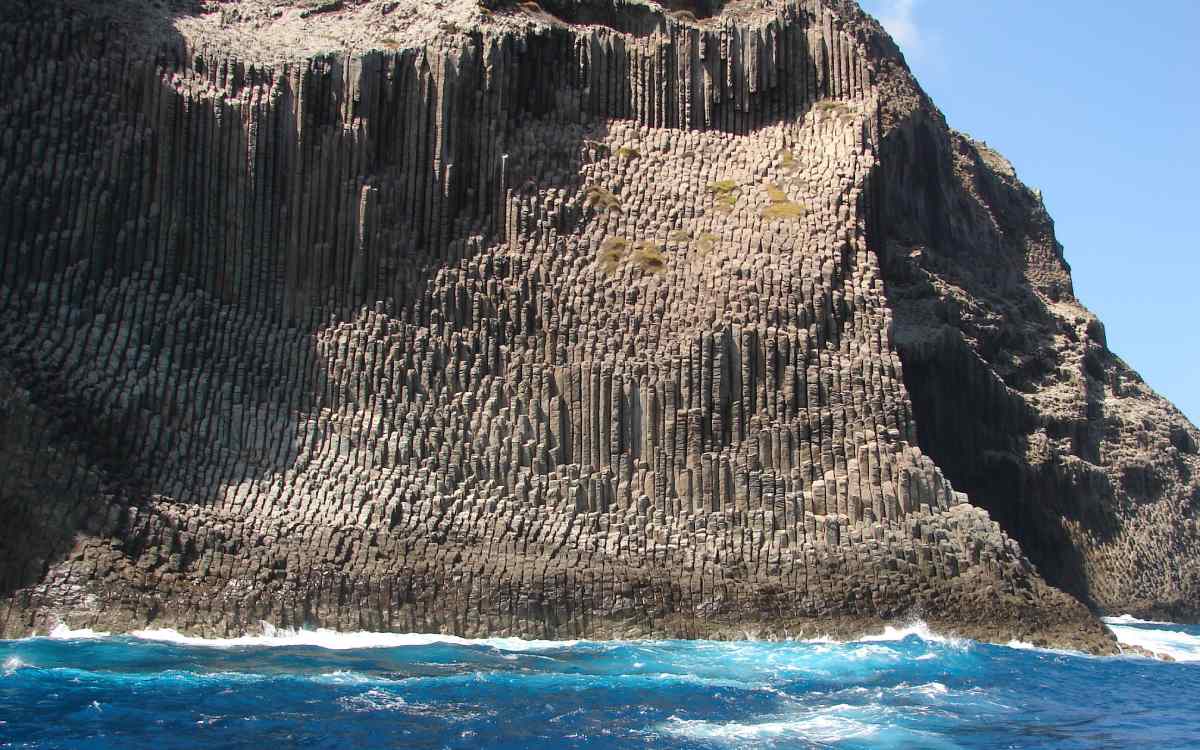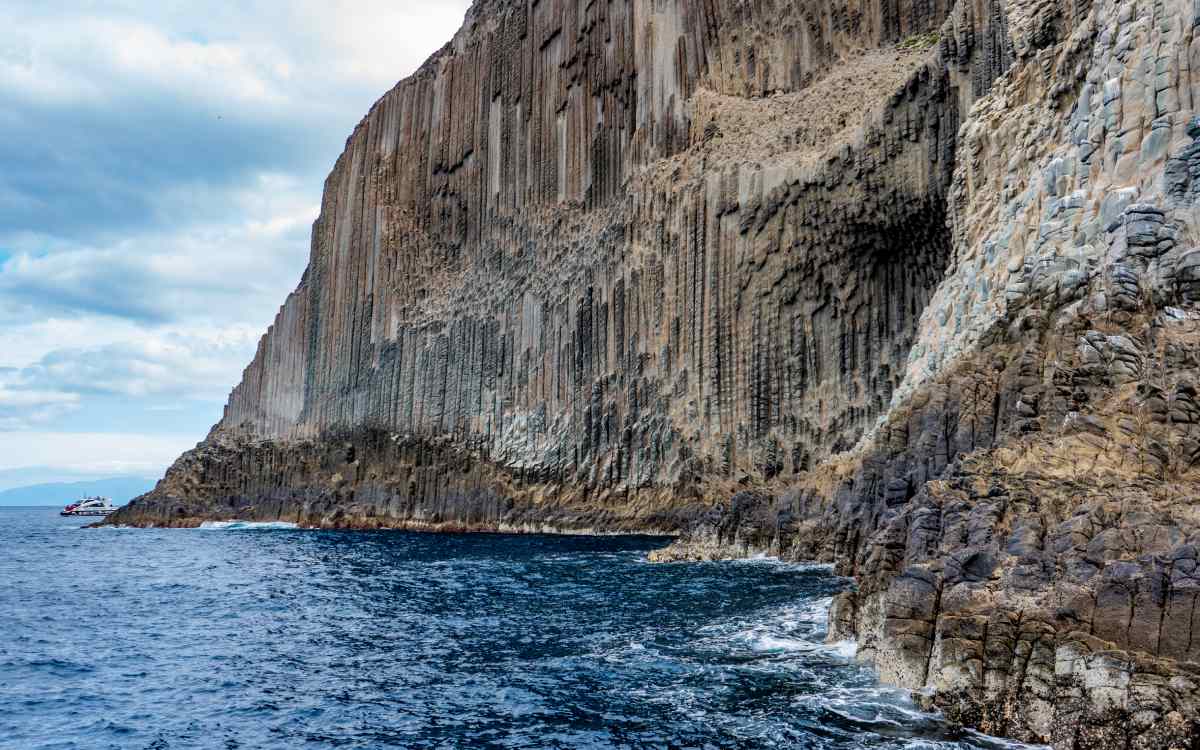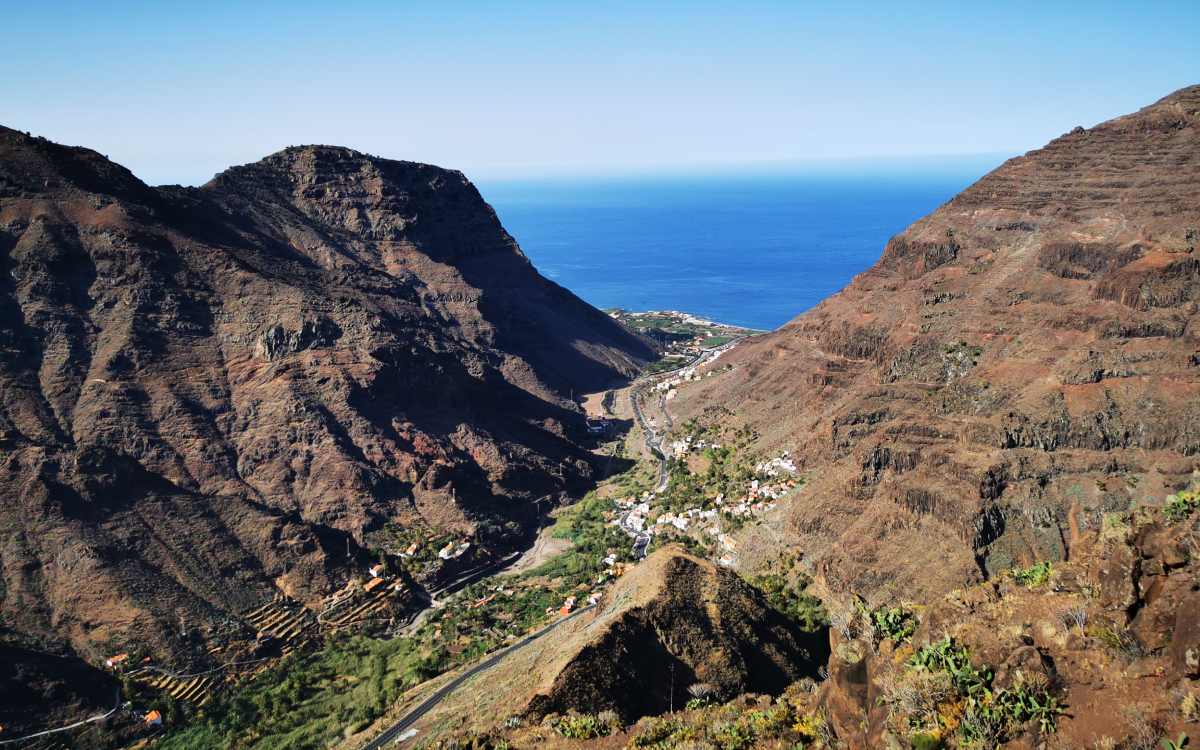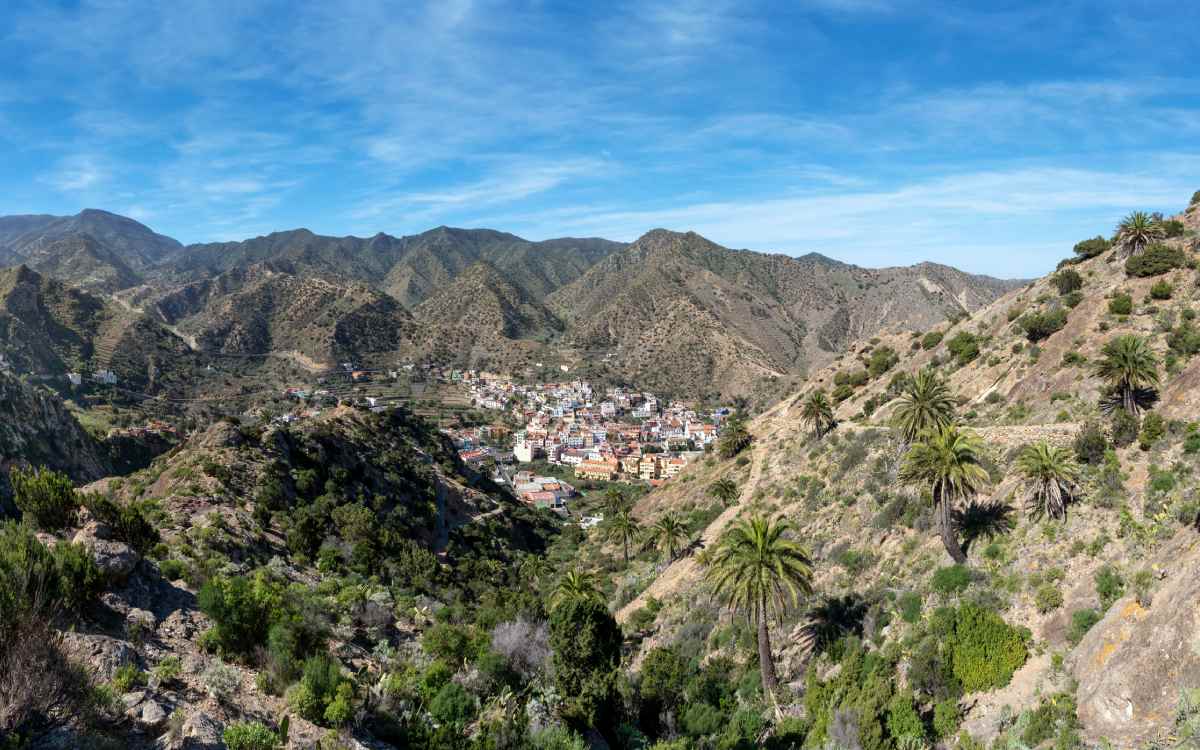
La Gomera’s tiny territory conceals a variety of stunning landscapes. There you can find thousand-year-old laurel forests, imposing rock formations standing out on the horizon, and seemingly insurmountable deep ravines where one can still hear the unique language known as silbo (‘the whistle’.) However, you have to go onto the sea to admire one of the most startling picture-postcard scenes on the island.

The ‘Spanish Giant’s Causeway’.| Shutterstock
Enormous hexagonal-shaped basalt pillars emerge from the sea giving rise to a strange, even unsettling image. It is the result of a rare geological phenomenon, which shares a reasonable likeness to the Giant’s Causeway in Northern Ireland. Beyond both of them sharing volcanic origins, the Órganos (which literally translates to ‘the Pipe Organs’) exhibit unique characteristics all their own.
Its name alone already hints at what will be found by those who travel to the northwest of this Canarian island. The Órganos is a collection of magnificent rock columns rising in perfect formation toward the sky, just like those tubular pipe organs seen in churches and cathedrals. However, its dimensions are much greater, even colossal, for these pillars extend 200 metres along the rock wall and rise more than 80 metres above the Atlantic waters.
These waters become the hands that make the Órganos sound. On days when the seawater is calm, the waves gently caress the tubular surface, creating soft, hypnotic melodies. But when the trade winds blow and the ocean becomes rough and crashes mightily against them, it creates furious and thunderous musical compositions.
The Órganos is a place of such beauty – as mysterious as it is inaccessible – that its image and sound can only be appreciated from the sea. Although it is possible to approach them from land, the only discernible view is that of the immense rock that shelters one of the most exceptional spots of the Islas Canarias.

The Órganos of La Gomera. | Shutterstock
Nature is capable of shaping spectacular works, even those that appear to be unfinished. This, in some way, is what has happened to the Órganos. The columns are actually the magma of a volcanic eruption. This especially dense magma, unable to reach the surface, contracted once it was cold until cracking into those unique, one metre-thick, hexagonal-shaped tubes.
That material destined to reach the surface finally did so, yet in a different manner. Over thousands of years, the erosion caused by wind, rain, and sea liberated these columns from its confinement. Being left in plain view, in some cases split and shaped, it has created that masterpiece known today as the Los Órganos de La Gomera Natural Monument.

The Órganos of La Gomera. | Shutterstock
The dark and cold image of the Órganos might give the impression of a place without life. This could not be further from the truth because the natural monument’s land surface, as well as its waters, conceal a rich biodiversity. In fact, this is a Special Bird Protection Area and marine reserve. This place is home to such species as the common tern, the yellow-legged gull and the osprey. As far as aquatic species, there are innumerable invertebrates and fish such as the Mediterranean parrotfish, which is emblematic of the Islas Canarias.
However, on this unmissable brief sea excursion to admire the Órganos in all its splendour, it is also possible to enjoy the sight of dolphins and whales in the wild. In fact, the only Whale Heritage Site in Europe is located between the coasts of La Gomera and Tenerife, a marine corridor where it is common to catch sight of finback, pilot, and sperm whales.

Valle Gran Rey. | Shutterstock
The Órganos are hidden among the imposing cliffs that drop to the sea at the far northern extreme of La Gomera at the town of Vallehermoso, though embarkations usually leave from Valle Gran Rey or at Santiago Beach. Travelling by boat allows one to fully experience the wild beauty along the western coast of this island.
Not only is it possible to observe the steep cliffs along this route, but also the hamlets defying the erratic mountain geography, which stand out like a lighthouse in truly breathtaking landscapes. Here lies Taguluche, whose whitewashed homes jut out onto the sea from the bottom of a ravine. Further to the north, you will spot Tazo, surrounded by a magnificent palm grove from where sugarcane juice or guarapo is extracted, used in the making of the famed palm syrup. Near the Órganos, in the Vallehermoso territory, one can see Arguamul, one of the most remote hamlets on the island, and the prettiest village in Spain.

Vallehermoso. | Shutterstock
Although the Órganos is Vallehermoso’s greatest treasure, it is also possible to enjoy some truly exceptional places inland. Not only is Vallehermoso the largest municipality on La Gomera, it is also the oldest, a place of great geological interest spanning 20 million years. Additionally, it can be traversed by means of countless hiking routes. Most trails are considered to be of medium to high difficulty, therefore it is important to have a certain physical fitness and to have the appropriate equipment on hand if one decides to take up the challenge.
And for those looking for more relaxing alternatives, the town has about ten beaches. Some are easily accessible while others less so. Nevertheless, all of them share the tranquility of isolated spaces, crystal-clear waters and generally strong waves. While the swell of the waves might make swimming hazardous and not always recommended, it is certainly worth discovering and enjoying them, even if only from the sandy shore.